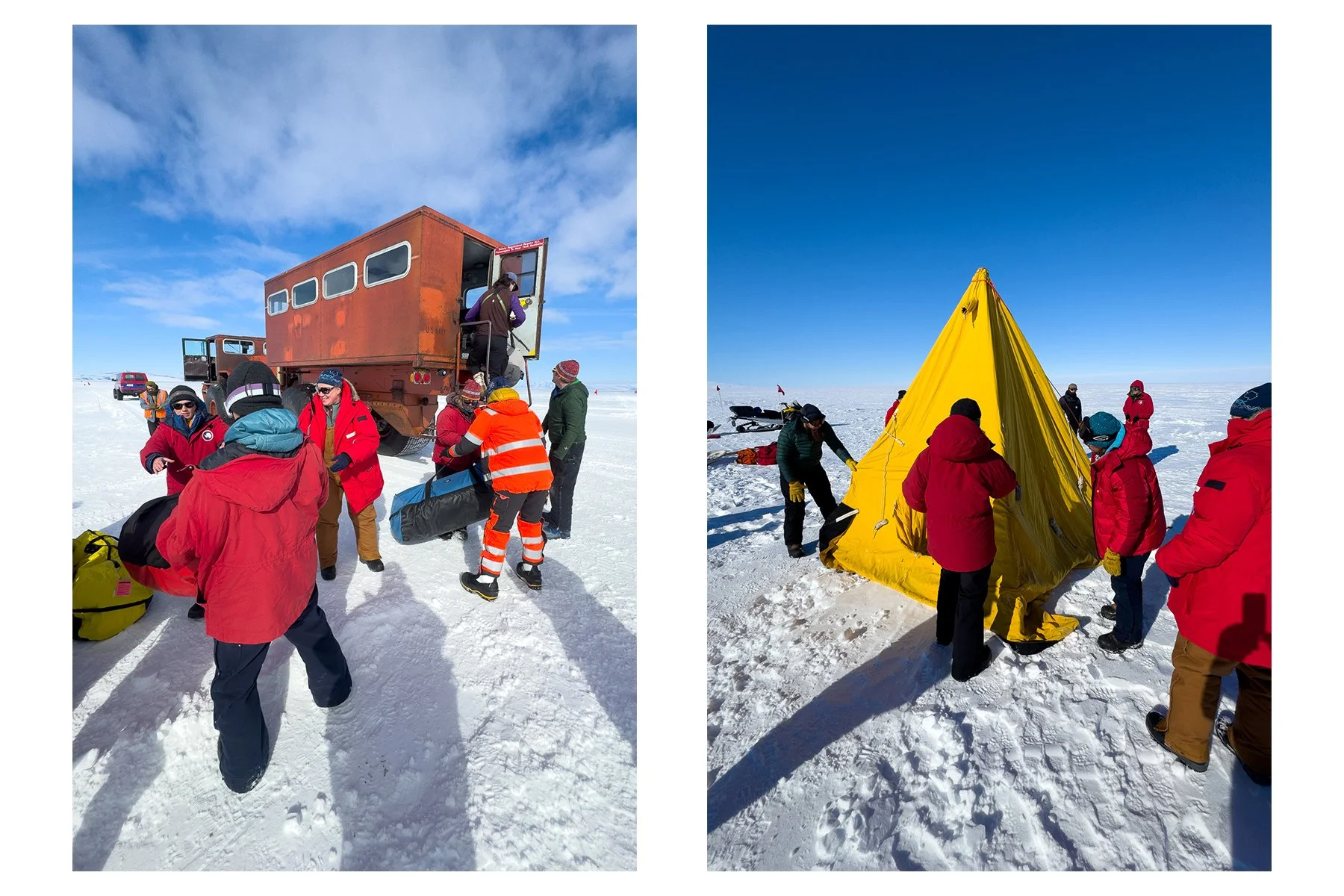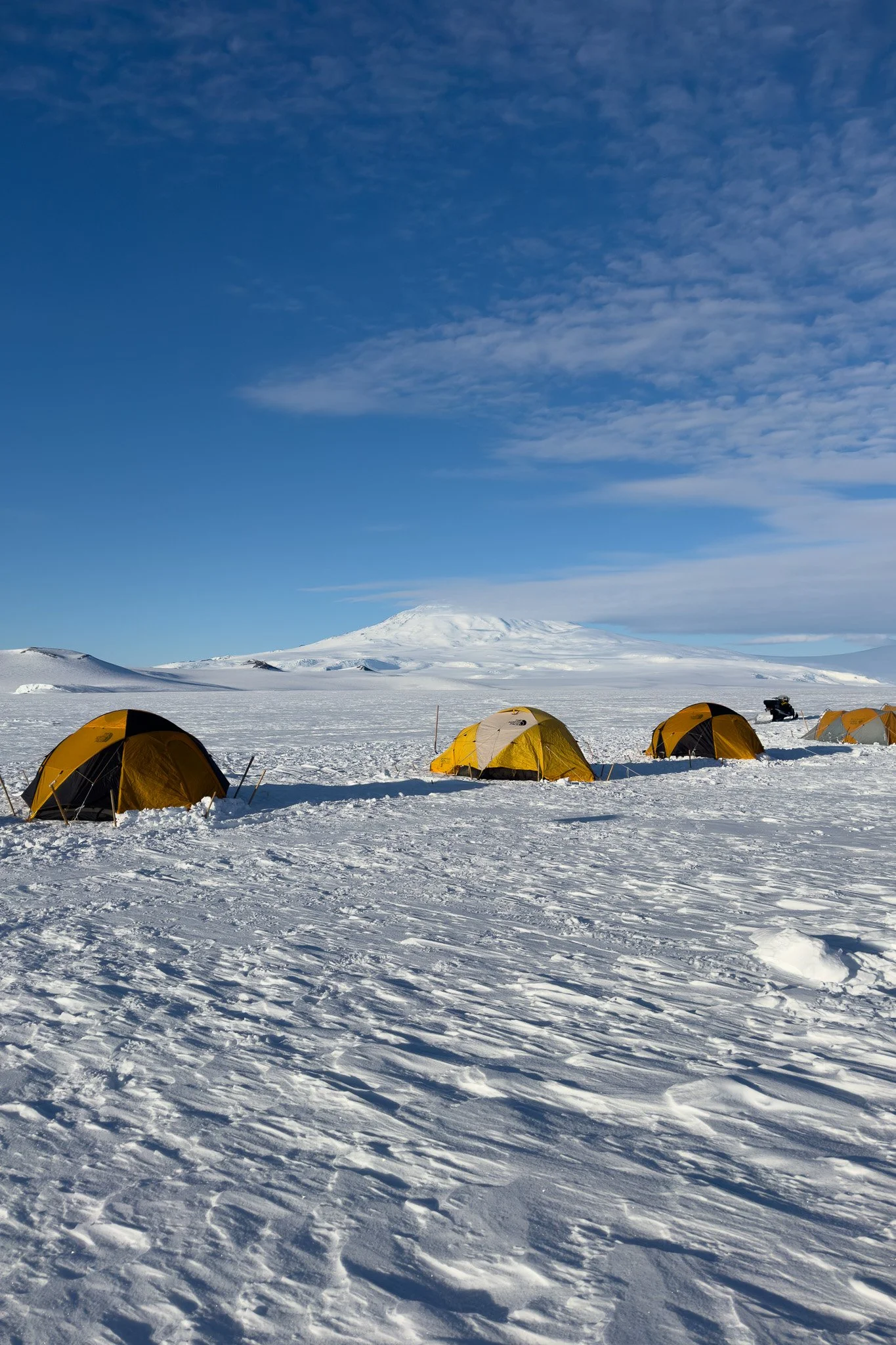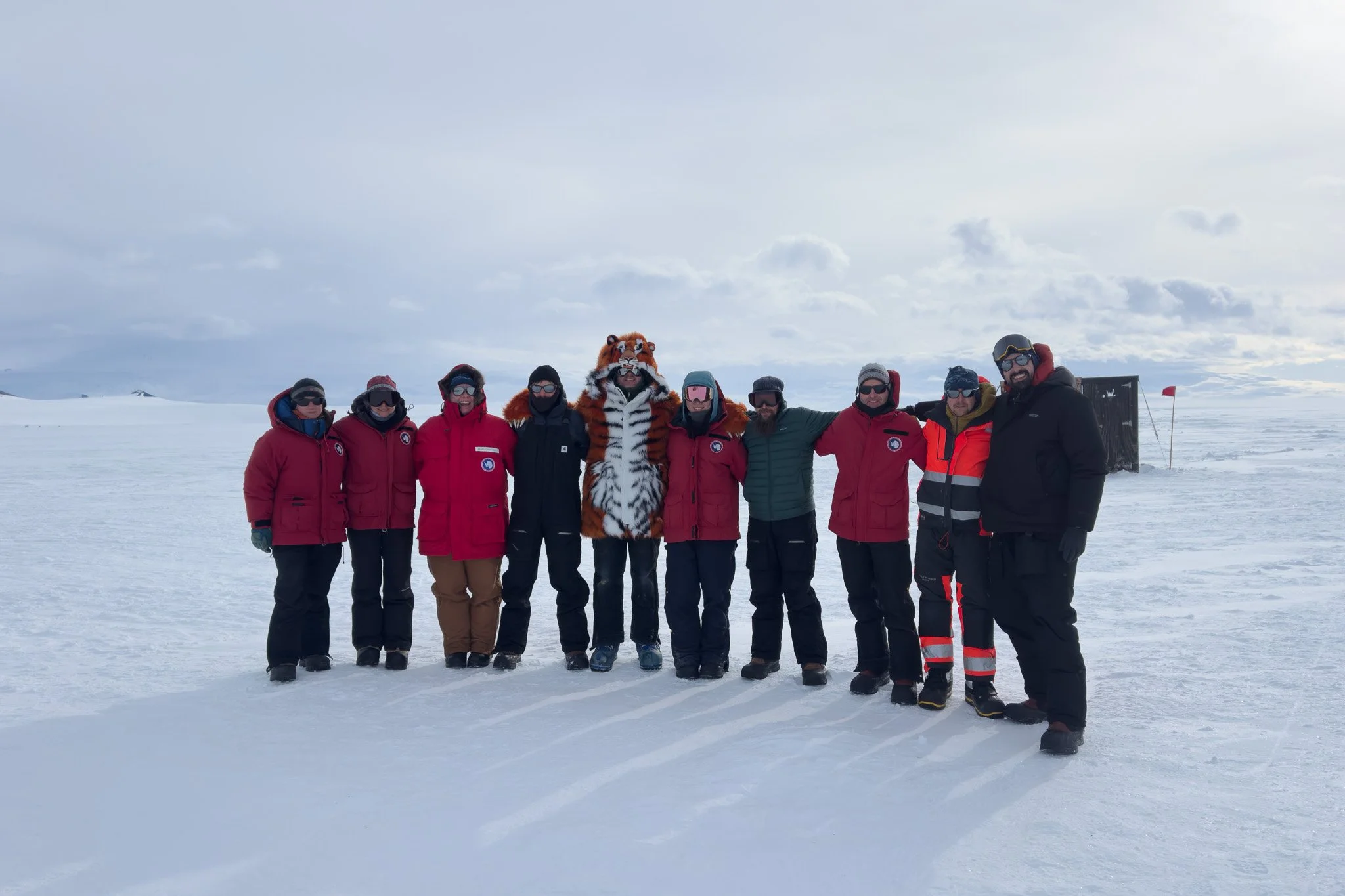The team is ready to fly to the Allan Hills this week!
Hello from the NSF COLDEX team in McMurdo Station, Antarctica. The last week has been filled with various trainings, our Deep Field Shakedown, and our final cargo submission as we prepare to head out to the Allan Hills in a couple of days.
On Tuesday, November 12, the entire Allan Hills team minus our two Antarctic Support Contractor team members embarked on a critical field deployment training: the Deep Field Shakedown. Taking place on the Ross Ice Shelf in full view of Mount Erebus, the purpose of the Shakedown is threefold. First, allow us to test our tents and sleep kits in as close an environment as we could get to being in the field. Second, help us understand the difficulties of setting up and navigating our camp in a cold and windy environment. And third, experience our first night camping as a team before we do so for seven weeks!
Waiting for our Delta pickup to the Deep Field Shakedown site.
At our designated site, we listened carefully as our instructor Ben explained field camp life, from safety protocols to communications with McMurdo Station. We learned how to set up a Scott tent, the iconic yellow polar pyramid tent which has been in use for over a century in these regions. We proceeded to set up our own tents, helping each other out in the process. For many of us, this was the first time tying so many Trucker’s Hitches in one go!
Unloading our gear from the Delta (left) and setting up a Scott tent (right).
“The view of Mt. Erebus was great to wake up to.”
Our Deep Field Shakedown site, showcasing a variety of tents we’ll be using at the Allan Hills. Mt Discovery is in the background on the left.
With camp set up, we shared a meal in a warm hut nearby, and proceeded back to our tents, expecting high winds in the morning. To our surprise, the weather cooperated with our desire for an easy morning: while it was cloudy, winds were gentler than expected, making camp take down easier than anticipated. At breakfast—a mix of instant oatmeal, French Press coffee, tea, and chocolate—we shared reviews of our first experience camping in Antarctica this year: thumbs up all around! “It was great,” says Romilly Harris Stuart, Science Co-Lead, and Post Doc at Oregon State University. “I really enjoyed the Shakedown, it helped me feel prepared, although I’m conscious that that will be the best night we’ll have this season. The view of Mt. Erebus was great to wake up to.”
If you haven’t seen it already, we also published a video on Instagram recapping the Deep Field Shakedown, featuring our Geophysics Lead and University of Washington PhD candidate An Li. Watch it here:
Camp with Mt Erebus in the background.
The other big event that took place this past week was making our final Science Cargo submission. Over the course of an entire morning, the team packed into the Science Cargo building (“SciCo” being the local lingo), where the extremely patient SciCo staff helped us weigh, measure, label, and submit all of our sleep kits, tents, science equipment, and additional food—all key items to a successful field season.
The 2025-2026 NSF COLDEX field season team after a successful Deep Field Shakedown!
With that done, the real countdown to field departure began! Our advance team, consisting of Antarctic Support Contract staff Jesse Keck and Branden Joy, finally boarded a plane to the Allan Hills after a few days of weather delays. There, they started setting up the camp that we will live in for seven weeks alongside an intrepid crew of carpenters (“Carps” as they are known here)—huge thank you to them! Soon after, a crew of Communications staff followed to install radio repeaters which are key for safe field communications. Again, thank you!
As of writing, the first third of our team, consisting of Science Co-Lead John Higgins, Ice Core Drillers Elizabeth Morton, Jay Johnson, and Andrew Haala have landed at the Allan Hills, joining Jesse and Branden. Tomorrow, the rest of our team is scheduled to fly to the Allan Hills in the morning and the afternoon. Wish us luck—the next update we will share will be from the deep field!
~ Martin Froger Silva, NSF COLDEX Digital Content Coordinator and I-187M Ice Core Handler.
As a reminder, we’ll be updating you throughout the field season via this blog and our newsletter. We’ll also be posting images, videos, and more on our Instagram and LinkedIn accounts, so follow us there if you haven’t done so already!
NSF COLDEX thanks the United States Antarctic Program for logistical support, with coordination and support from NSF Office of Polar Programs, NSF Antarctic Infrastructure and Logistics Program, the NSF Ice Drilling Program, the NSF Ice Core Facility, and the Antarctic Support Contractor.





